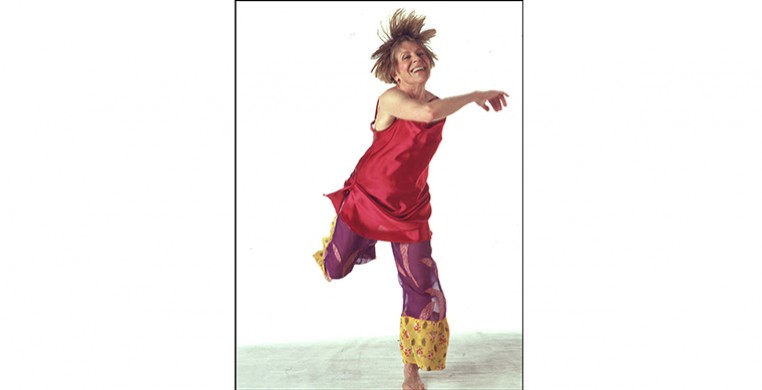Elizabeth “Nana” Shineflug grew up on the North Shore, following what might be considered an ordinary path. After earning a degree in mathematics, Nana taught briefly at New Trier High School, until her unbridled, creative spirit lead her down a different path. After attempting a dance career in New York, she returned to Chicago during a time in which there were few places and opportunities for modern dancers. In 1972, Nana started a repertory company called the Chicago Moving Company (CMC), in response to this need.
Flash forward to 2012, and CMC celebrated its 40th anniversary at The Dance Center of Columbia College Chicago after decades of creation and innovation. The company had evolved from a repertory company to a creative home for Nana’s choreography, and her most beloved dances were revived for the anniversary performance. The celebration turned out to be Shineflug’s swan song; news of her death on January 15, 2015 at age 79 quickly spread through Chicago’s tightly knit dance community. It’s a community, in fact, knit together by Nana. Her impact and influence on dance in Chicago is undeniable, the loss of which will be deeply felt. Nana’s love for dance and dancers led her from an ordinary path to an extraordinary one; as word of her death spread on social media it became apparent that few dancers in Chicago had not been touched or affected by Nana in some way.
According to Kay LaSota, CMC’s long-time Managing Director, Producer, and Nana’s right-hand woman, the subject of planning for the company’s future was not a new one. As Nana quietly battled cancer, CMC began making subtle changes to its infrastructure. Out of such conversations came a carefully crafted new series designed to support new, emerging, and under-produced artists. Dubbed Dance for $9.99 (or D49), the summer series and companion performance Dance Shelter provide opportunities for dancers and choreographers within CMC and Nana’s wider circle of “dance family.”
Perhaps the greatest tribute to any artist is preserving all she has built in an ever-changing artistic and economic climate. LaSota says that the company will go on, maintaining its now iconic home on the second floor of the Hamlin Park Fieldhouse, a Chicago Park District Arts Partnership occupied by CMC since the mid-1990’s. The company hopes to ramp up its activity in a hybrid form that blends CMC’s past histories as a repertory company, producer of others’ work, and house for Nana’s choreography. It will eventually seek a new director, ideally from within the company, “but of course that is hundreds of people,” said LaSota. Indeed, Nana’s impact has been long, broad, and deep.
For this author, Nana was the first to introduce me to a way of moving “from the center.” She was tough, but not in the way that many dance teachers are tough; she taught with a fierce positivity, joyful intensity, and a great passion for the body in movement. Her ideas and aesthetic are synonymous with Chicago modern dance. Perhaps most endearing and inspiring was Nana’s ability to continue to learn and evolve as an artist, feeding off fresh inspiration from CMC’s dancers and her students at Columbia College Chicago, where she was a tenured professor in the Theater department. “Words that I associate with Nana,” said LaSota, “are optimistic and relentless. She was not afraid to fail. She got knocked down many times, as we all do in this field, but she had the ability to always get back up, because it matters.”
Nana died peacefully in her home at the age of 79, surrounded by family. Chicago Moving Company is planning a public celebration Spring 2015 at Hamlin Park Fieldhouse, with details to come. In lieu of flowers, Nana’s family requests donations be made in her name to the Chicago Moving Company or the Trinity Booster Club, a nonprofit organization supporting the Trinity Irish Dancers.
--Lauren Warnecke

